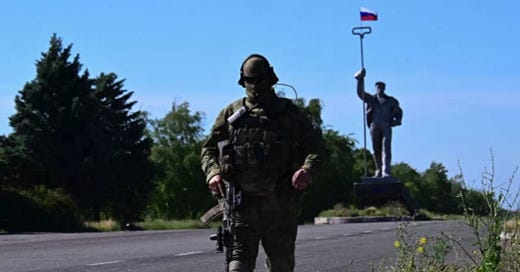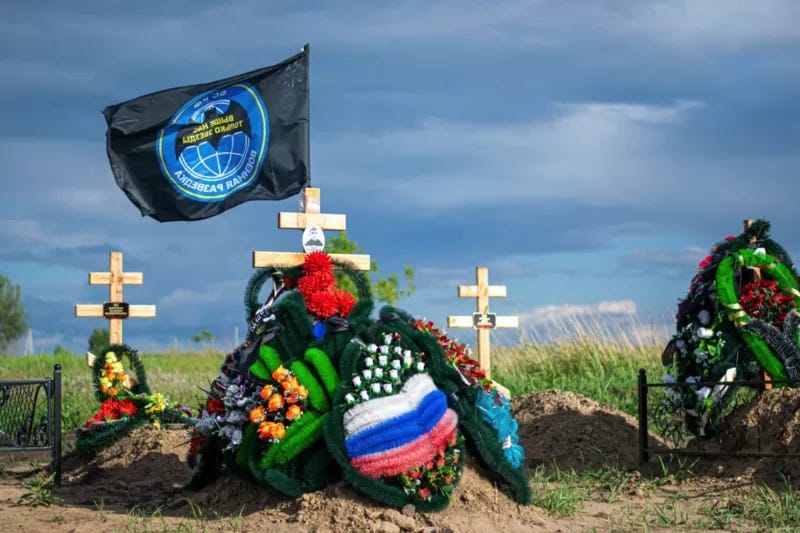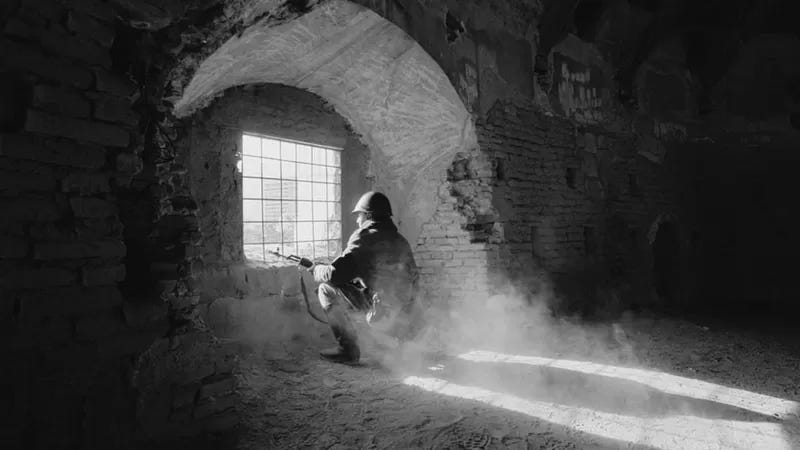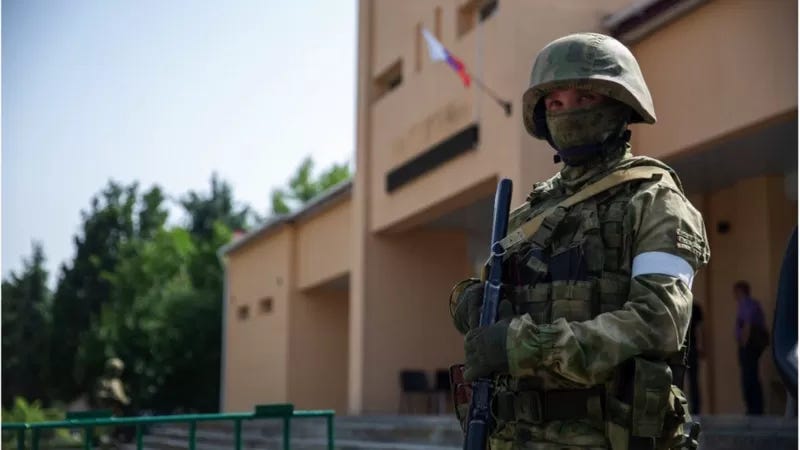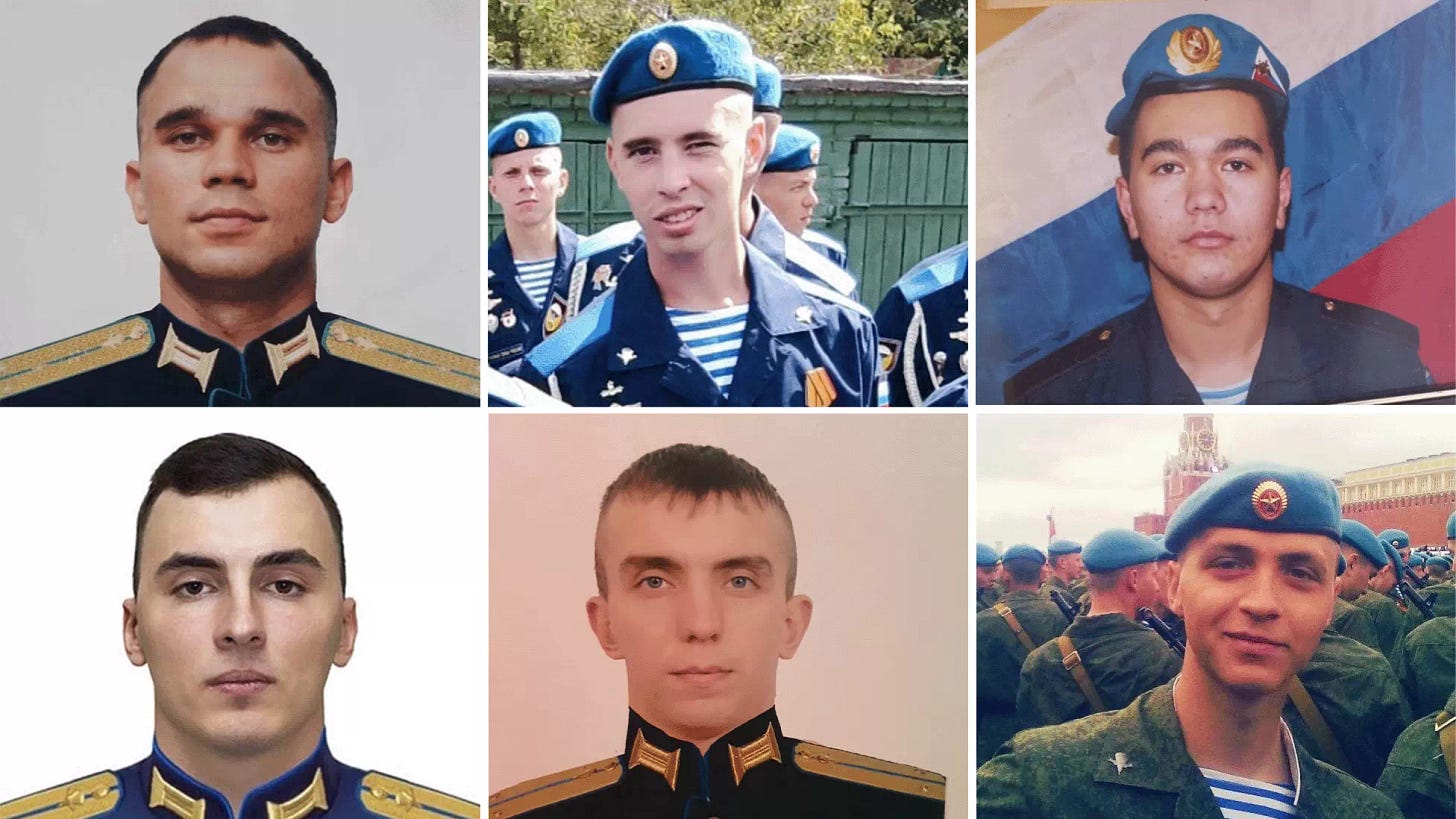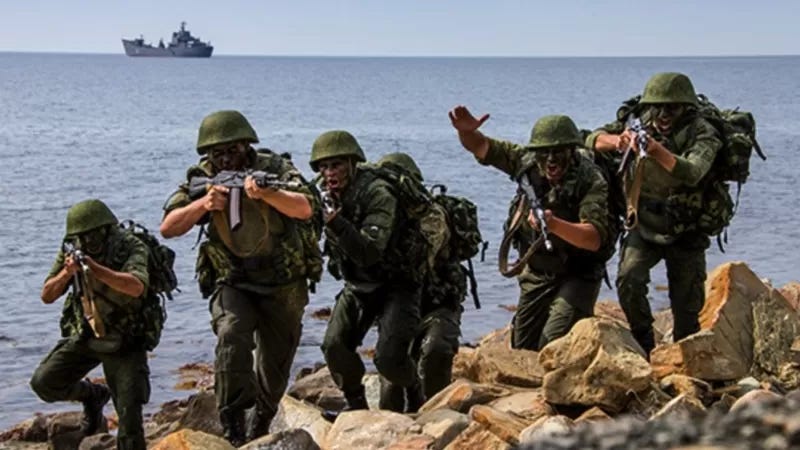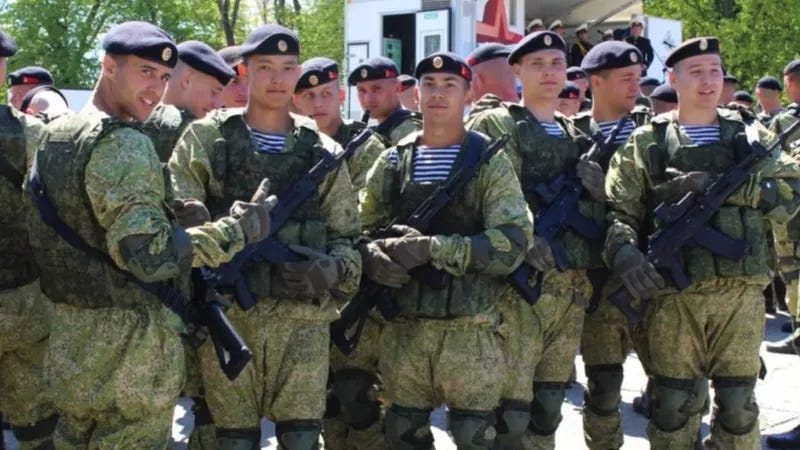Elite specialists: Russia’s costly losses in Ukraine
The BBC has been able to establish that Russia has lost hundreds of elite military specialists, whose training took years of effort, and millions of dollars.
By Olga Ivshina
In six months of war in Ukraine, the Russian army has lost thousands of servicemen. Estimates of the number of dead vary greatly. But it’s not only the total number of losses which is important, but also specifically who has been killed – and what kind of people they were. The BBC has been able to establish that Russia has lost more than 900 elite specialists, whose training took years of effort, and millions of dollars.
According to both western and Russian experts, the combined armed units of the Russian military have proven unprepared for assault operations. As a result, tasks that are generally assigned to infantrymen have had to be carried out by special forces, marines, and paratroopers.
It is particularly these formations, traditionally considered the elite of the Russian army, that have suffered substantial losses during the first six months of the invasion of Ukraine. Dozens of military pilots have also died. Experts say it will be a hard job for Russia to make up for the loss of all these specialists.
Special forces of the GRU
On 1st September, using open-source data, the BBC managed to confirm the death of 151 servicemen from the special forces of Russia’s military intelligence service – the GRU. Almost a quarter of them, 22 per cent, were officers. These figures do not reflect the real number of losses, but they make it possible to at least roughly estimate how many special forces troops are missing from units of the Russian army fighting in Ukraine.
The data regarding losses in this text is based on a list of confirmed dead Russian servicemen derived from open sources. It is maintained by the BBC in conjunction with the publication ‘Mediazona’ and a team of volunteers.
Judging from published obituaries, the greatest losses during the invasion of Ukraine have been suffered by the 22nd Guards Special Forces Brigade. At least 30 of its servicemen have been killed, including four company commanders – and there are only four special forces companies in the brigade.
According to Michael Kofman, an expert at the Center for Naval Analyses, for every Russian soldier killed during the war in Ukraine there are approximately 3.5 wounded. On this basis one can estimate that no fewer than 130 soldiers have, temporarily at least, left the ranks of the 22nd Special Forces Brigade of the GRU as a result of death or injury.
The exact number of special forces units is classified, but even according to conservative estimates, the elimination of 130 fighters may be equivalent to the complete loss of one entire special forces company. During the war in Chechnya, a reconnaissance company of GRU special forces consisted of 45-70 people. If we take this as the basis, it is quite possible that half of the reconnaissance companies of the brigade have been put out of action.
Comparable losses have been suffered by other units of the GRU special forces during the war with Ukraine. The 24th Guards Brigade has lost at least 21 people, including four officers. It is also known that 26 servicemen of the 3rd Guards Special Forces Brigade have been killed, including five officers. From the 16th Guards Special Forces Brigade, the deputy commander, a ranking lieutenant-colonel, the chief of staff with the rank of major, and the company commander with the rank of captain have all been killed in Ukraine.
For the Russian army, the loss of special forces officers may be the most painful and difficult to replace, according to experts interviewed by the BBC. In the event of the retirement of ordinary specialists, such as a grenadier or mortar gunner, a replacement fighter from another specialisation can be retrained in a few weeks, or more rarely, one or two months. If the commander of a GRU special forces company is killed, he can only be replaced by an officer of the same military specialisation.
It takes at least four years to train a lieutenant to the appropriate qualification. And in order to lead a company, a lieutenant must gain experience and work his way up to captain, which will take about four more years. In total, that’s at least eight years of training, experts say.
In the USSR, the GRU special forces were entrusted with the most important secret operations and sabotage behind enemy lines. Special research institutes worked on individual orders to provide them with the best weapons and uniforms.
In Russia, GRU detachments have begun to be assigned to tasks which are unfamiliar to them - because many other army units have shown themselves unprepared to participate in battle. In the early years of the war in Chechnya, GRU special forces were often used simply as a combined armed intelligence service. During the assault on Grozny, special forces detachments were generally included in assault groups on the same conditions.
Experts note that during the war in Ukraine, GRU detachments are again being used to cope with tasks which are atypical for elite intelligence officers, leading to additional losses.
Published obituaries lead to the exact same conclusion. For example, it was reported that GRU Major Andrey Kunakov died in Mariupol while ‘sweeping the street’. Usually, searches and street checks in captured settlements are carried out by second echelon subdivisions. Throwing elite intelligence officers into such missions is strange, to say the least.
Special Forces of the Russian National Guard
In peacetime, the security forces of Russia’s National Guard usually specialise in the dispersal of demonstrations, as well as operations to detain specific persons or small armed groups.

The National Guard was nevertheless sent to Ukraine on the very first day of the invasion. As of 1st September, 245 members of the National Guard are known to have died, most of whom are employees of special forces, and special police units such as SOBR and OMON. Almost one in four of them had an officer’s rank.
At least 16 of the dead Russian soldiers were wearers of the ‘maroon beret’ – a sign of special distinction. In the National Guard, those who are selected for the right to wear such a beret are considered to be the very best.
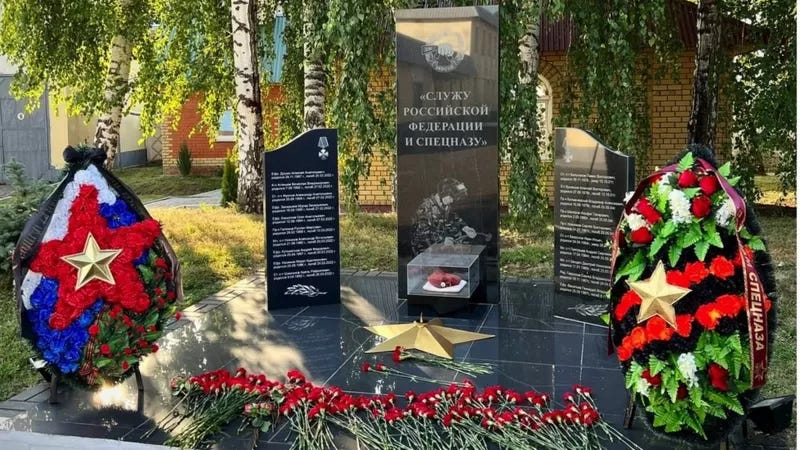
According to open source data, as of 1st September, the greatest loss of personnel has been among the 25th ‘Bars’ – Snow Leopard - detachment of the special forces of the Kazan National Guard. In Ukraine, 10 of its members were killed, including two officers. Judging by a monument on the unit’s grounds, the detachment has lost as many people during the six months of war in Ukraine as it did during 10 years of armed conflict in Chechnya.
The ‘Merkuriy’ detachment of special forces from the city of Smolensk has suffered similar casualties. Following an investigation, the BBC was able to confirm the death of at least 10 members of the detachment.
On July 28th, ‘The Brotherhood of Maroon Berets – Penza’ veterans’ organisation published a video in which you can see a memorial corner set out for the 26th ‘Merkuriy’ special forces detachment. On the table are photographs of 18 special forces troops with black memorial ribbons. Next to them are two carnations – a flower traditionally laid in even numbers at war memorial sites.
After a short article by the BBC about the video, the original post was deleted, but a cached copy can still be found online.
Comparing freeze-frames with open source data, we were able to confirm the names of 10 dead commandos, including Senior Warrant Officer Aleksandr Vishnyakov, Warrant Officer Pavel Stepanenko, Sergeant Maksim Tregubenko, Warrant Officer Vitaly Kasyanov, and Corporal Yaroslav Simakov, among others.
In the case of Lieutenant Nikita Tsvirenko, it was only indicated that he had joined the special forces unit of the National Guard – his city was not specified. But the BBC revealed that in 2021 and 2022 Nikita Tsvirenko appeared in football and orienteering competitions in Smolensk, where the detachment is based. His photograph and date of birth match the image published of the deceased officer.
It is also reported that along with Tsvirenko, a senior lieutenant of the same unit, Anatoly Yezhov, also died.
Photos of eight of the 18 commandos – 40 per cent of the alleged losses in ‘Merkuriy’ - have yet to be successfully identified.
We see a similar trend when studying Russian cemeteries. While searching for graves of Russian soldiers who have died since February 24 – the day of Russia’s full-scale invasion of Ukraine – we find in addition to the graves of those whose deaths were publicly reported a similar number of graves belonging to soldiers and officers whose deaths were not reported by the authorities, local journalists, or relatives on social media. Sometimes more.
Based on these observations, it can be assumed that the list of confirmed losses of the Russian army, held by the BBC, may include at least 40-60 per cent fewer names than have actually been buried in Russia.
There are also reports of losses in the ‘Vityaz’ – Knight - special forces: at least seven dead, including two officers. This detachment was the first special forces detachment to be formed in the internal troops, so serving in it is considered particularly prestigious; and the standard of training for servicemen is among the highest.
FSB and FSO
Judging from open sources, about 20 officers from the FSB, Russia’s main intelligence and security agency. and the FSO, the Federal Protection Service, in charge of tasks relating to the security of high-ranking officials, are known to have died during the invasion of Ukraine. The most losses have been among those who serve in the border guards, which is under the command of the FSB. However, there are also officers from top secret units among the dead.
According to Andrei Soldatov, an expert on the Russian special services, the Special Operations Center of the FSB has been actively involved in hostilities on the territory of Ukraine, including military activities in occupied territories such as in Kherson.
The death of Nikolai Gorban, Lieutenant-Colonel of the Special Operations Directorate of the FSB Special Purpose Center has been reported. The media in Kamchatka in the far east also reported the death of FSB special forces Lieutenant-Colonel Sergei Privalov.
During the summer, the grave of Lieutenant-Colonel Vladimir Margiev appeared on the ‘alley of heroes’ in Moscow region’s Nikolo-Arkhangelsk cemetery. Where exactly the officer served is unknown, but in the photograph he is dressed in a dark blue uniform with FSB emblems. According to tradition, employees of the FSB special forces ‘Alpha’ and ‘Vympel’ (‘Pennant’) are buried along this alley, although occasionally there are burials of other military personnel as well.
Lieutenant-Colonel of the FSB Aleksey Kryukov died in the very first days of the war and is buried in a cemetery in Yekaterinburg. On his grave there is a wreath from department ‘A’ of the FSB, and on the memorial photo there is the emblem of the ‘Alpha’ detachment. In June, there were reports published about the death of a captain of ‘Alpha’, Ilya Tsuprik, but then an alternative version of events was shared – that he could have died even earlier, in Syria.
If all these officers really died in Ukraine, it is a very serious blow for the special forces of the FSB. For comparison, the last time ‘Alpha’ lost more than three members in six months was in 1995-1996, after heavy assaults in response to the hostage crises in Budyonnovsk and in Pervomaiskoe during the first Chechen War.
The best of the Airborne Forces

Paratroopers make up exactly one fifth of all confirmed deaths among Russian servicemen during the war in Ukraine.
Apart from a few units, the forces of Russian infantry had not taken an active part in military operations since the Russian-Georgian war of 2008.
“The combined arms units of the Russian armed forces were not ready for assault operations. This is, to a small degree, the result of a lack of heavy equipment, but much more significantly, it is a technical issue – their basic inability to conduct close combat with firearms,” says retired Russian officer, Alexander Aratyunov.
As a result, the brunt of the fighting in the first weeks of the war fell on airborne forces.
According to open source data, the 331st Guards Airborne Regiment from Kostroma has suffered the greatest losses: officially, there are more than 80 dead, including the regiment commander and 20 other officers.
The paratroopers of the 331st regiment were considered one of the strongest units of the Russian army. They regularly won interdepartmental competitions and, on Victory Day, they frequently marched on the black cobbles of Red Square in Moscow. The soldiers and officers of the regiment featured in the Russian army’s operations in the Balkans, fought in Chechnya, and also took part in hostilities in the territory of the Donetsk region of Ukraine in 2014.
The attempt to burst into Kyiv in early March cost the lives of dozens of soldiers from the 331st regiment. After the Russian retreat, the unit was briefly withdrawn to Belarus. In early April, the Kostroma paratroopers took part in the battle of Izyum in the Donetsk region, and in May they were transferred to the Luhansk region, near the city of Popasnaya.
Taking into account the military personnel whose deaths have not been publicly reported, the real death toll in the 331st regiment could be as high as 150 men. If we add to this the approximate number of wounded (on the basis that for every two dead there are approximately seven wounded), the regiment could be missing 650-670 men. This is more than half the estimated strength of the 331st regiment at the start of the war.
The 247th Guards Regiment of the Airborne Forces from Stavropol has also suffered serious losses. A year before the start of the war, it received a special pennant from the Ministry of Defense ‘as a sign of special trust and a recognition of merit’. During the six months of military activities in Ukraine, the paratroopers have lost 63 men, including the regiment commander and at least 12 other officers.
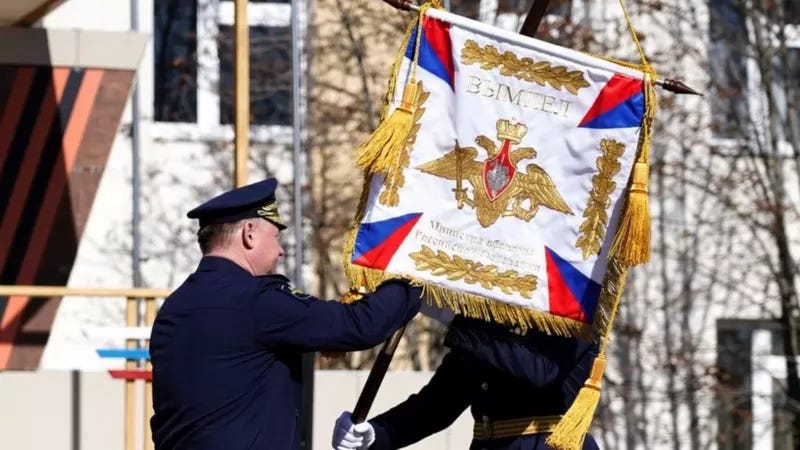
Against a background of incoming reports of losses, the people of Stavropol proposed lengthening the ‘Alley of Remembrance’ created many years ago in honour of fallen paratroopers. In response, the command of the 247th regiment suggested building a car park in the empty space.
“It was decided to satisfy the request of the military unit – they have a right to this now more than anyone else right now,” said the mayor of Stavropol. The matter of building a memorial to those killed in Ukraine would be discussed with the paratroopers "after the end of the special operation."
Much less is known about the losses in the most elite detachment of the Airborne Forces – the 45th Guards Brigade special forces, based in Kubinka, a town near Moscow. Using open sources, the BBC managed to establish the death of 14 soldiers of this unit, including one officer. For comparison, in the seven years of Russian military operations in Syria, the deaths of only three soldiers were reported among this brigade.
Marines
Russian Marine unites have also taken an active part in the invasion of Ukraine. They have mostly been fighting on the southern front.
According to open data, the 810th Guards Brigade, based in annexed Crimea, has suffered the most losses. The Marines have lost at least 56 people, including two brigade commanders: Aleksey Sharov, who was killed in March, and his replacement, Sergey Kens, who died in July.
In comments on the post about the death of Kens, those who knew him wrote that “he wasn’t taken to the hospital in time”. If this is actually so, it’s a vivid illustration of the serious problems facing the Russian army: a lack of modern personal first-aid kits and functional means of evacuating the wounded.
The regulation first-aid kits of marines and other Russian military personnel contain a rubber tourniquet, which stops the flow of blood, going back to the 1960s. But they do not include modern tourniquets, hemostatics for reducing haemorrhage, and air- and water-tight occlusive dressings. These were long ago part of the medical kits of NATO countries. It’s because of this that Russian wounded have a far lower chance of survival than their western counterparts.
“Supplying soldiers with first aid kits and having real skills in providing rapid first aid to the wounded on the battlefield play a huge role in war. This directly affects the number of losses and the number of survivors. Russia has already made this mistake before in Chechnya, when, for a long time, it was unable to establish an effective system for evacuating its wounded. This time, it does not seem that Moscow has taken previous mistakes in matters of medical provision into account”, said Sarah Ashbridge, professor at the Royal United Services Institute (RUSI), a defence and security think tank.
By August, many fighting Russian soldiers and officers had received new personal first aid kits. They were purchased by volunteers with money collected across the country for the military.
The 336th Guards Brigade have lost 40 marines, including the chief of staff of the brigade and the political officer of the brigade, with the ranks of colonel and lieutenant-colonel respectively.
It’s also known of 52 deaths in the 155th Guards Brigade, including eight officers.
Military pilots
As of September 1st, the BBC knows of the death of 67 Russian military pilots during the invasion of Ukraine (including navigators and flight engineers).
This is a special category of casualty, since the crews of combat aircraft and helicopters are unique specialists and the elite of any army in the world. The training of one attack pilot can take 15-17 years and costs $12-14 million.
Despite the formal presence of hundreds of modern and combat-ready multi-role fighter aircraft and fighter-bombers, the Russian air force has been unable to carry out a large-scale offensive air campaign. It could be linked to the loss of leading military pilots in the first months of the war.
“The Russian Aerospace Forces have not been able to generate a large scale offensive air campaign despite having hundreds of modern and (on paper) capable multirole fighter and fighter-bomber aircraft,” said Justin Bronk, senior analyst at RUSI.
“Part of the reason for this is that Russian pilots typically fly around 80 hours per year, which is not sufficient to be really capable in their assigned primary role, let alone lots of secondary missions,” he continues.
Data on casualties among pilots may indirectly confirm his words. At least five of the dead pilots are over the age of 50. It is well known that some of them should have retired a few years ago. Their participation in operational flights may be evidence of a shortage of qualified and motivated pilots among the younger generation.
At the same time, dozens of experienced pilots were shot down in the first weeks of the war. For example, the commander of an aviation regiment from the far eastern Transbaikal region of Russia died on the very first day of hostilities. An aviation commander with experience in the wars in Georgia and Syria failed to return from a flight on March 8th.
According to British intelligence, for many years the military pilot training program in Russia has followed a strict and pre-approved plan, the goal of which was impressing high-ranking officials.
Such an approach may have quashed initiative and prevented the skills development needed to make independent decisions quickly. This in turn could hinder the development of combat skills among younger Russian military air crews.
“In many ways it is difficult to know what Russian pilots are doing on most sorties because of the lack of detailed information in public sources. What is clear is that Russian aircraft seldom cross far into Ukrainian held territory due to the continued effectiveness of Ukrainian surface-to-air missile defences,” Bronk said.
“So while their aircraft are multirole and can carry a wide range of weapons in theory, in practice the number of pilots with the skills and recent practice to make use of that inherent flexibility is very limited,” he concluded.
We continue to collect data on dead military personnel. If you would like to share some information on this topic, please contact us via the link.
Read this story in Russian here.
Translated by Oliver Banatvala.

